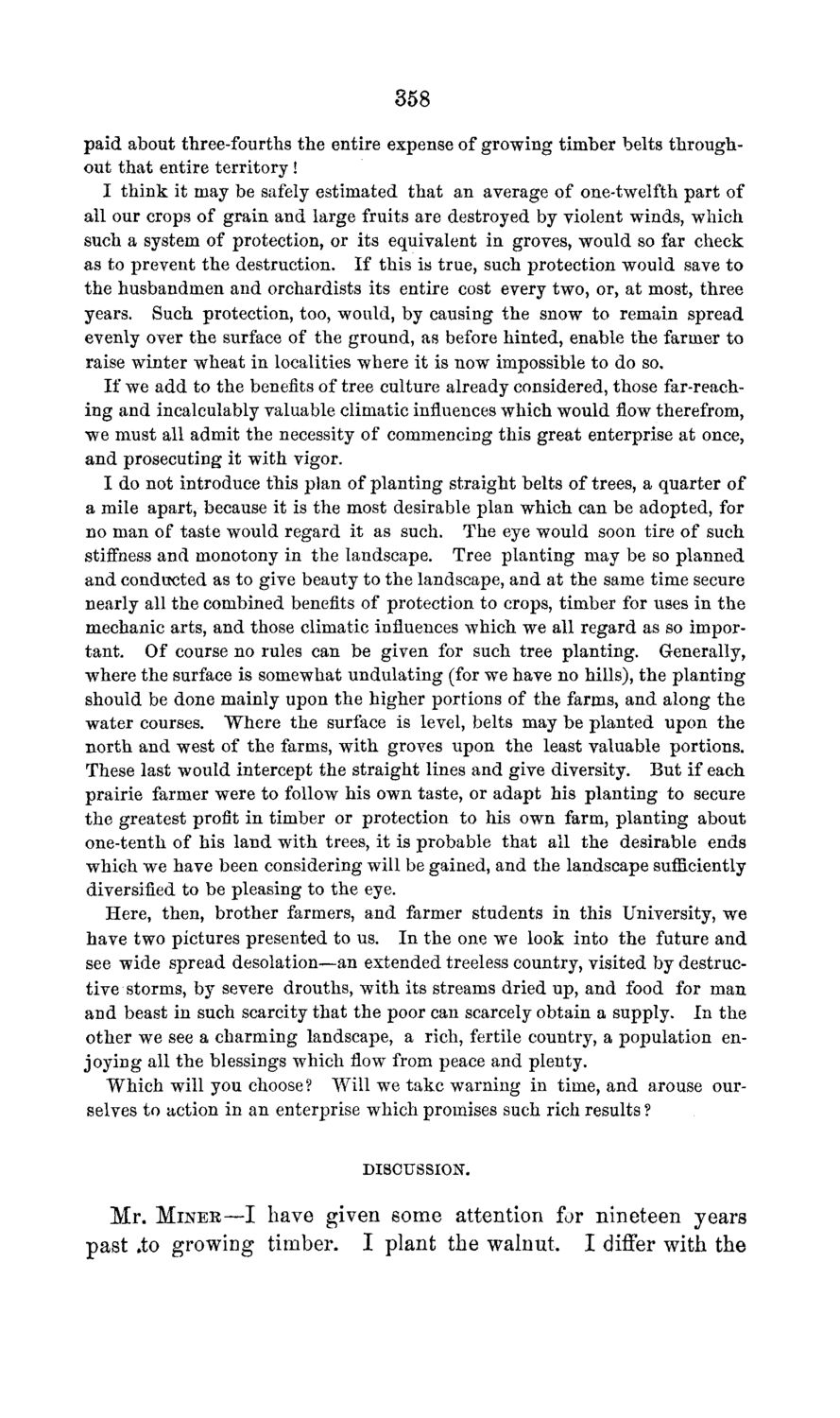| |
| |
Caption: Board of Trustees Minutes - 1869
This is a reduced-resolution page image for fast online browsing.

EXTRACTED TEXT FROM PAGE:
358 paid about three-fourths the entire expense of growing timber belts throughout that entire territory! I think it may be safely estimated that an average of one-twelfth part of all our crops of grain and large fruits are destroyed by violent winds, which such a system of protection, or its equivalent in groves, would so far check as to prevent the destruction. If this is true, such protection would save to the husbandmen and orchardists its entire cost every two, or, at most, three years. Such protection, too, would, by causing the snow to remain spread evenly over the surface of the ground, as before hinted, enable the farmer to raise winter wheat in localities where it is now impossible to do so. If we add to the benefits of tree culture already considered, those far-reaching and incalculably valuable climatic influences which would flow therefrom, we must all admit the necessity of commencing this great enterprise at once, and prosecuting it with vigor. I do not introduce this plan of planting straight belts of trees, a quarter of a mile apart, because it is the most desirable plan which can be adopted, for no man of taste would regard it as such. The eye would soon tire of such stiffness and monotony in the landscape. Tree planting may be so planned and conducted as to give beauty to the landscape, and at the same time secure nearly all the combined benefits of protection to crops, timber for uses in the mechanic arts, and those climatic influences which we all regard as so important. Of course no rules can be given for such tree planting. Generally, where the surface is somewhat undulating (for we have no hills), the planting should be done mainly upon the higher portions of the farms, and along the water courses. Where the surface is level, belts may be planted upon the north and west of the farms, with groves upon the least valuable portions. These last would intercept the straight lines and give diversity. But if each prairie farmer were to follow his own taste, or adapt his planting to secure the greatest profit in timber or protection to his own farm, planting about one-tenth of his land with trees, it is probable that all the desirable ends which we have been considering will be gained, and the landscape sufficiently diversified to be pleasing to the eye. Here, then, brother farmers, and farmer students in this University, we have two pictures presented to us. In the one we look into the future and see wide spread desolation—an extended treeless country, visited by destructive storms, by severe drouths, with its streams dried up, and food for man and beast in such scarcity that the poor can scarcely obtain a supply. In the other we see a charming landscape, a rich, fertile country, a population enjoying all the blessings which flow from peace and plenty. Which will you choose ? Will we take warning in time, and arouse ourselves to action in an enterprise which promises such rich results ? DISCUSSION. Mr. MINER—I have given some attention for nineteen years past .to growing timber. I plant the walnut. I differ with the
| |